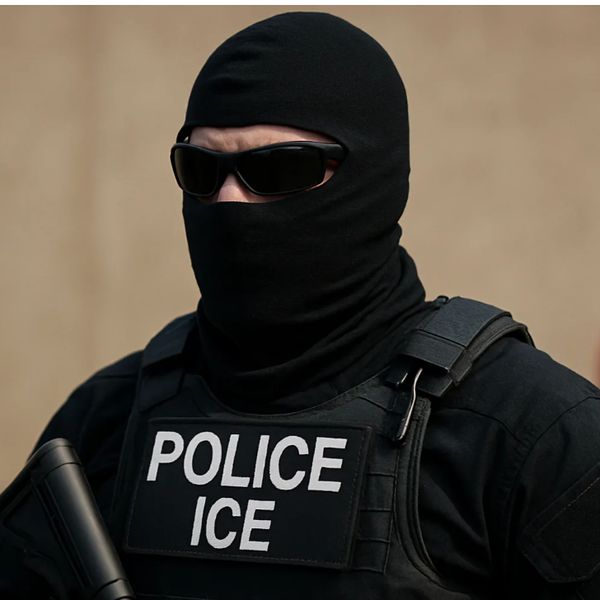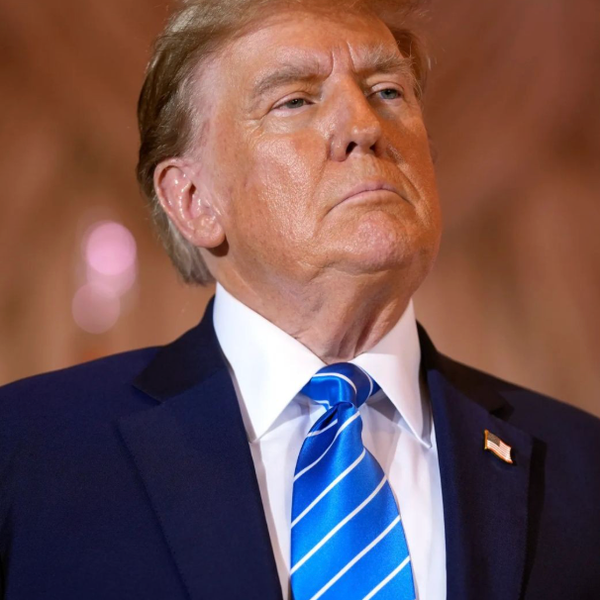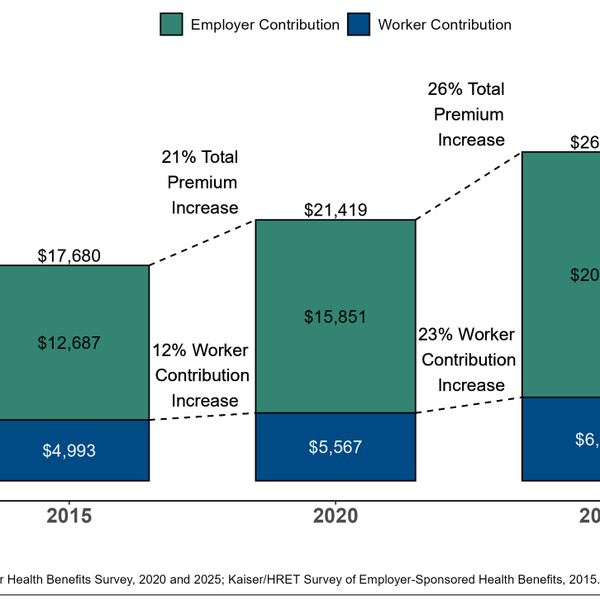
Patriotic Betrayal: The Inside Story of the CIA’s Secret Campaign to Enroll American Students in the Crusade Against Communism by Karen M. Paget; Yale University Press
The Burglary: The Discovery of J. Edgar Hoover’s Secret FBI by Betty Medsger; Vintage
Days of Rage: America’s Radical Underground, the FBI, and the Forgotten Age of Revolutionary Violence by Bryan Burrough; Penguin Press
—
In 2006, James Risen and Eric Lichtblau received the Pulitzer Prize for their stories on the Bush administration’s domestic surveillance programs. Later that year, they reported that the administration also traced the banking records of thousands of Americans with suspected ties to al Qaeda. Because Risen and Lichtblau revealed classified information in their stories, some are now calling for their prosecution under the Espionage Act, which doesn’t distinguish between investigative reporting and funneling state secrets to hostile foreign governments.
On this issue, Senator Tom Cotton argues that the system is the solution. “When people violate the espionage laws,” he told a conservative website last month, “they should be prosecuted. They believe they have First Amendment rights, and that’s a defense they can assert in court. Reporters and editors don’t get to decide for themselves what is and is not a sensitive national-security matter. That’s for the American people to decide through their elected representatives.” The Obama administration seems to agree; it has prosecuted more whistleblowers under the Espionage Act than all other administrations combined.
Is there any reason to believe that Senator Cotton’s prescription would work as outlined? That question links several recent books about national security and political dissent in the 1960s and 1970s. Taken together, they suggest an intriguing thought experiment: If everyone had followed Senator Cotton’s line, what exactly would we know about our government, and how could we use that knowledge to shape it through our elected representatives?
Karen Paget’s exhaustively researched Patriotic Betrayal suggests we would know almost nothing about the CIA. In the 1960s, Paget’s husband was an officer in the National Students Association (NSA), a private organization founded after the Second World War. As part of its Cold War strategy, the CIA not only funded the NSA but also determined its policy positions. Only top officers knew about this arrangement, and many went on to work for the agency. When Paget and her husband were briefed on the CIA connection during the 1960s, they agreed to swear an oath of secrecy under the Espionage Act. The NSA was by no means the only organization in this position; by that time, the CIA had developed an invisible network of political, cultural, and media fronts and contacts that functioned as a highly effective propaganda machine. One agency official named it the Mighty Wurlitzer, after the organ that orchestrated audience responses during the silent film era.
NSA members played their part by reporting on foreign students they met at international conferences. The CIA fed that information to other governments, which almost certainly used it to crack down on dissidents. “My God,” asked one NSA officer who later worked for the CIA, “did we finger people for the Shah?” A similar scenario played out in Iraq, where the 1963 Ba’athist coup led to 10,000 arrests and an estimated 5,000 executions. According to Paget, “It apparently never occurred to witting staff that the information [they provided] might flow through their CIA case officers into a broader CIA pipeline, a fact that haunts many of them today.” At least one senior U.S. official wasn’t haunted at all. “We were frankly glad to be rid of them,” he said of the liquidated Iraqi communists.
The NSA’s development officer, who wasn’t sworn to secrecy, spilled the beans to Ramparts magazine, which published the story in March 1967. Other news organizations picked it up and soon revealed the larger network the CIA had assembled. Congress was taken aback, and agency officials were stunned; it was the first time the CIA had received such public criticism. The brass immediately launched an investigation of Ramparts and everyone connected to it. The CIA’s charter forbade domestic operations, so the fig leaf for the investigation was that the upstart San Francisco muckraker had foreign backers. Yet even after the agency knew this was false, it continued to target the magazine. Ramparts also criticized U.S. policy in Vietnam, and the CIA soon broadened its operation, code-named MH/CHAOS, to include antiwar groups.
The Ramparts vendetta “set in motion an even larger catastrophe for the CIA,” Paget notes. “One may draw a straight line from the Ramparts exposures in 1967 to the 1975 congressional hearings on CIA activities and the revelation of the so-called Family Jewels, a collection of documents containing the deepest agency secrets, including its part in assassinations.” Those hearings, in turn, eventually led to the Foreign Intelligence Surveillance Act (FISA) of 1978, which instituted the surveillance protocols the Bush administration pointedly ignored after the 9/11 attacks.
Nothing in Paget’s account suggests that, absent the whistleblower story, the CIA would have been responsive to American voters speaking through their elected representatives. Whatever knowledge we have of the agency and its history was obtained, at least initially, despite the government’s workaday operations and not because of them.
A similar story played out at the FBI, J. Edgar Hoover’s fiefdom for more than four decades. Although the FBI routinely carried out “black bag jobs” and illegal wiretaps, its operations received no serious scrutiny from Congress or the courts. Before 1971, only one FBI file had ever been made public, and that was over Hoover’s strenuous objection. In 1949, a Justice Department employee was charged with stealing FBI secrets on behalf of the Soviet Union; when her attorney asked that FBI files be admitted as evidence, Hoover claimed that turning them over would endanger national security. He also suggested that the court reprimand the defense attorney for even requesting the files.
As Betty Medsger’s The Burglary makes plain, all that changed in 1971 when a small group of anti-war activists broke into the FBI office in Media, Pennsylvania. The files they stole revealed a wide range of illicit surveillance and harassment by the bureau. Ironically, the same day Hoover learned of the stolen files, Assistant Attorney General William H. Rehnquist testified under oath that the federal government conducted virtually no domestic surveillance. The burglars mailed the files to five news organizations, four of which immediately returned them to the FBI. After much internal debate, The Washington Post decided to run a story by Medsger. It was another bombshell.
Two FBI programs were especially controversial. One was the Security Index, which began as a running list of dissidents to be rounded up in case of a national emergency. (The list included Carey McWilliams, who was serving in California state government and later became editor of The Nation.) The other was COINTELPRO, which flourished during the 1960s and early 1970s. According to FBI documents, its stated goal was to “expose, disrupt, and otherwise neutralize” the New Left and those connected to it. Much of the surveillance and harassment was directed at antiwar and black activists. We know that the FBI wrote a letter to Dr. Martin Luther King, Jr., suggesting that he take his own life. Less well known is the fact that between 1960 and 1966, FBI agents burglarized a Socialist Workers Party office at least 92 times. They also issued bomb threats to party offices and fired shots at one of them.
None of these practices served any law-enforcement purpose. As Medsger notes:
The FBI’s spying operations did not lead to the prevention of any bombing, for instance, by the Weather Underground or any other group that planted bombs in that era. And the files led to few, if any, arrests after such bombs were detonated. Whatever the FBI was doing as it invaded lives, it was not preventing violent crimes or building cases on which arrests and successful prosecutions could be based.
She concludes that the FBI’s goal wasn’t to investigate, prosecute, and convict, but rather to harass and destroy these groups.
Hoover also deployed the bureau’s resources to neutralize his critics. “In a very real sense,” LBJ’s attorney general Nicholas Katzenbach later testified, “there was no greater crime in Mr. Hoover’s eyes than public criticism of the bureau.” Even President Nixon feared Hoover, who had amassed enough dirt to destroy most politicians. Senator Edward Long of Missouri once asked Hoover to provide records of the FBI’s electronic surveillance activities. Hoover replied that he would have to furnish all of those records, including conversations in which the Teamsters union allegedly offered Long money. After that conversation, Senator Long issued a statement that the FBI didn’t conduct wiretaps.
After the Media burglary, the FBI couldn’t maintain that fiction. Four months after the bureau closed its fruitless investigation of that heist, one of Hoover’s successors came clean. Clarence Kelley admitted that the bureau’s illicit activities were “clearly wrong and quite indefensible. We most certainly must never allow them to be repeated.” One FBI official said the burglars should have been prosecuted and then pardoned for their service to the nation.
A common denominator in these books is the Cold War consensus on communism. In effect, both major parties shared the CIA and FBI view that communists and their dupes were behind the civil rights and anti-war movements. For many in power, it was inconceivable that red-blooded Americans would oppose institutional racism or the Vietnam War as such. That category error, reinforced by a culture of secrecy, diminished the authority and effectiveness of both organizations. With the Watergate revelations, which were guided by leaks from a top FBI official, the White House’s reputation was also badly tarnished.
These events furnish the backdrop for Bryan Burrough’s Days of Rage, which focuses on radical violence of the 1970s. That violence included shooting police officers, bank robberies, kidnapping Patty Hearst, and planting thousands of bombs to protest government actions and to foment a revolution. As Burrough notes, the idea behind almost every bombing was to highlight the Establishment’s vulnerability, not to kill or injure. These groups had few options for claiming media attention, and he calls their bombings “exploding press releases.”
Burrough begins Days of Rage by challenging what he calls a myth: namely, that radical violence beginning in 1970 was a protest against the Vietnam War. “What the underground movement was truly about –what it was always about — was the plight of black Americans,” he writes. With varying degrees of accuracy, this claim applies to several groups he tracks, including the Black Liberation Army, the Family, and the Symbionese Liberation Army. But for others, the war and its effects turn out to be central to the story he tells.
Burroughs devotes more attention to the Weather Underground (originally “Weatherman”), which grew out of Students for a Democratic Society in 1969, than to any other group. The war in Vietnam swelled the ranks of SDS, and Burrough cites one of its leaders on the importance of 1968, when “people came to the conclusion that the only way to stop the war was make a revolution, and the only way to stop racism was make a revolution.” One of Weatherman’s first acts was the “Days of Rage” rampage through Chicago from which Burrough takes his title; its slogan was “Bring the War Home.” In 1971, after it changed its name to the Weather Underground, the group bombed the U.S. Capitol to protest the invasion of Laos. The next year, it bombed the Pentagon in retaliation for the U.S. bombing of Hanoi, and in 1975, it bombed the State Department building “in response to the escalation in Vietnam.” The Weather Underground was more than an anti-war group, but how Burrough can cleanly separate its history and actions from the anti-war movement is a mystery.
The war influences Burrough’s story in other ways as well. Many of his subjects were Vietnam veterans radicalized by their military experience. The tiny Symbionese Liberation Army, which said it was targeting racism along with “all the other institutions that have made and sustained capitalism,” included two veterans. The United Freedom Front was led by Ray Levasseur, a veteran from Maine who began his activism by opposing the war. He was incarcerated on a marijuana charge, paroled in 1971, and influenced by the prison movement. Four years later, he and a handful of comrades began robbing banks. They were outraged by racism, but it’s a stretch to say that the United Freedom Front was motivated primarily by the plight of black Americans.
Burrough frequently scants or distorts the relevant historical context. COINTELPRO makes only a handful of brief appearances, even though it specifically targeted SDS and Weatherman. The War on Drugs, which Nixon aide John Erlichman later said was meant to target young people and blacks, is notable for its absence. So are revelations of CIA mischief. Burrough devotes a single sentence to police brutality at the 1968 Democratic National Convention. The Pentagon Papers are mentioned once, and Watergate is touched on lightly. There are fleeting references to Cambodia and Kent State. One chapter opens with President Nixon calling Hoover, the CIA director, and two other national security officials into the Oval Office.
Everywhere [Nixon] looked, the antiwar movement seemed to be turning increasingly violent. The deaths at Kent State were still fresh in the air. Weatherman had now declared war; its first attacks were promised any day … The president lectured Hoover and the others that ‘revolutionary terrorism’ now represented the single greatest threat against [sic] American society.
Would Burrough have us believe that the anti-war movement, and not the Ohio National Guard, was responsible for the deaths at Kent State? I don’t see any other way to read this passage.
Burrough also conflates radicals and hippies and thereby distorts the latter group’s values and influence. The two cohorts overlapped, but they were by no means interchangeable, and there was a great deal of well-documented tension between them. According to Burrough, America “had fallen in love with everything about this groovy new counterculture — except its politics.” (Here and elsewhere, groovy signals Burrough’s disdain for that period’s youth culture.) At the same time, he claims that the counterculture was a victim of its own political success; the nascent environmental and women’s liberation movements were “diverting the attention of many who had built their lives around protesting the war and racism.” Finally, he implies that the counterculture, which was nothing if not communal, fostered widespread narcissism in the broader American culture; he quotes Tom Wolfe and a contemporary article by David Horowitz to clinch that point. Never mind the muddle; this is hippie punching of the highest order.
Burrough presents himself as a journalist marshaling the facts and minimizing his political judgments, but his selection and emphasis make the radical violence of this period look even crazier than it was. Although he mentions egregious state violence, not only in Southeast Asia but also in America’s black communities, he saves his outrage for its more sensational revolutionary counterpart. Virtually no one defends these groups or their tactics today, but Burrough is surprised by the low-key press accounts of that period, “when bombings were viewed by many Americans as a semi-legitimate means of protest” or “little more than a public nuisance.” Perhaps the press struck a different balance between blown-up toilets in empty buildings and the far more lethal forms of sanctioned political violence at hand.
Critics have rightly praised Days of Rage for its original reporting; many underground figures shared their stories with Burrough for the first time, and he interviewed retired FBI agents to flesh out his account. For that reason alone, I recommend Days of Rage, especially if read alongside Medsger. Whether or not others share my misgivings about Burrough’s overall portrait, it certainly complicates Senator Cotton’s view of how our government works — and what we’re entitled to know about its workings. Nowhere does Days of Rage indicate that American voters could have shaped government policies and priorities they knew nothing about at the time.
If there are lessons to be extracted from these three books, they have as much to do with the dangers of elite consensus as with those of dissent. Today’s bipartisan support for secrecy and massive domestic surveillance, for example, seems as uncritical and self-justifying as the Cold War consensus that produced the foreign policy, intelligence, and law enforcement disasters of the 1960s and 1970s. These books show, among other things, that excessive government secrecy produced bad governance and even worse outcomes, and that a strict policy of killing the messenger turned those outcomes into catastrophes.
Peter Richardson is the book review editor at The National Memo and teaches at San Francisco State University. In 2013, he received the National Entertainment Journalism Award for Online Criticism. His new book is No Simple Highway: A Cultural History of the Grateful Dead. His history of Ramparts magazine, A Bomb in Every Issue, was an Editors’ Choice at The New York Times and a Top Book of 2009 at Mother Jones.








